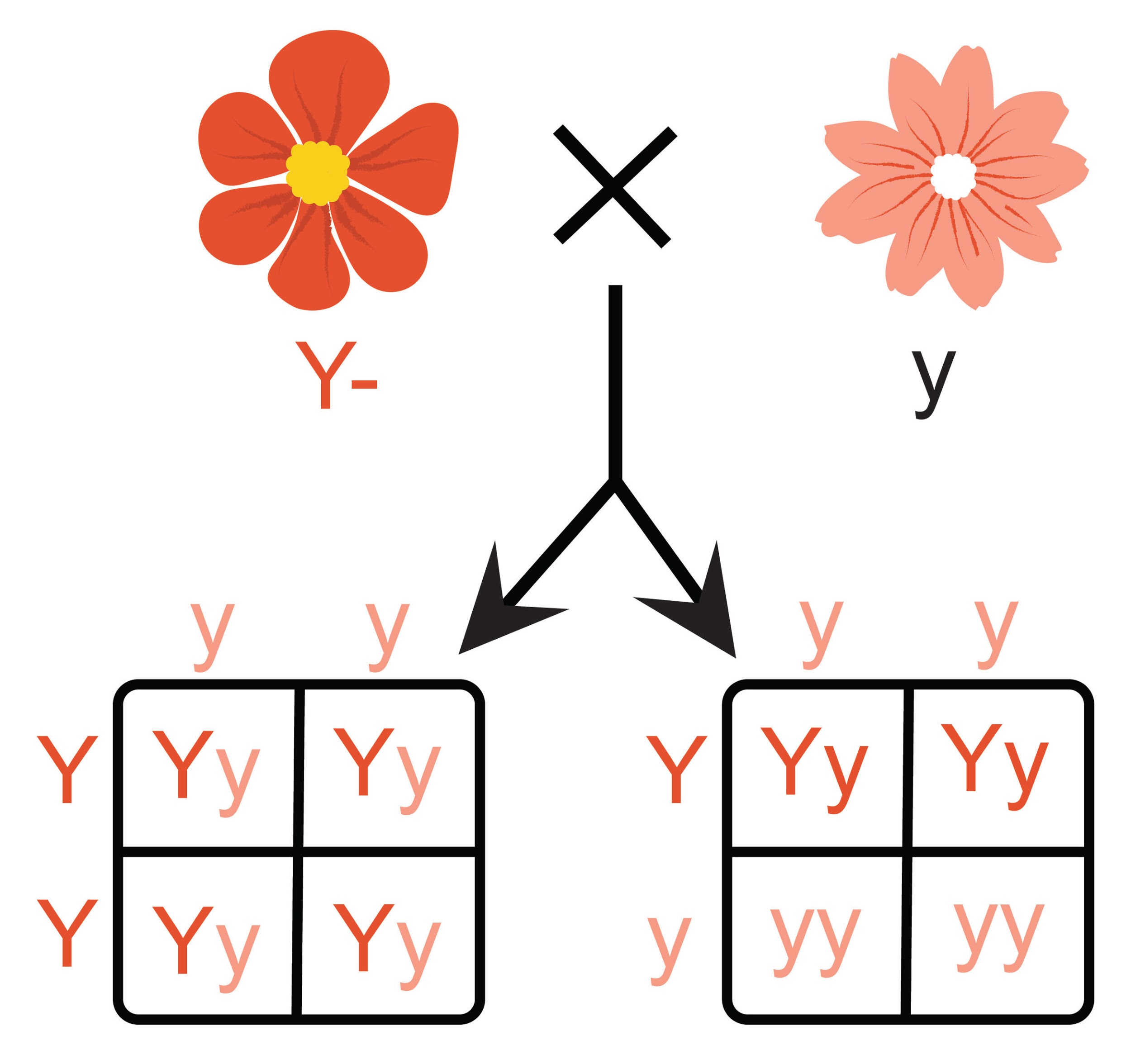
Cross between hybrid and recessive parent is
a) Back cross
b) Test cross
c) Monohybrid cross
d) Dihybrid cross
Answer
552k+ views
Hint: Mendel developed a method through which he was able to determine the progeny being produced would have either parental character or the recombinant character. He used a monohybrid and dihybrid cross in which one character and two characters were tested respectively. His cross was based on the external features that were visible in the pea plants.
Complete answer:
The cross is done either with homozygous parents or with the hybrids produced with the either of the parents. When a cross is done between the hybrid progeny produced and the recessive homozygous parent then the cross is known as the test cross.

It is done to determine whether the dominant parent used for crossing earlier was homozygous or heterozygous in nature.
Additional information:
- The back cross is done when the hybrid progeny is randomly crossed with either of the parents. They can be crossed with the dominant parent or the recessive parent.
- The monohybrid cross is done when a single character is taken under consideration. In this, the parents are homozygous in nature and the cross is made between the dominant and the recessive gene of that trait.
- Dihybrid cross is done when there are two characters that need to be taken into consideration. In this also the dominant homozygous is crossed with the recessive homozygous and F1 progeny is obtained.
So, the answer is 'b) Test cross'.
Note: A test cross is done only with the recessive parent and the back cross can be done with either dominant or the recessive parent. If the back cross is done with the dominant parent then the progeny obtained would show dominant character in their phenotype whereas, when it is done with the recessive parent then both hybrid and recessive type progeny is obtained.
Complete answer:
The cross is done either with homozygous parents or with the hybrids produced with the either of the parents. When a cross is done between the hybrid progeny produced and the recessive homozygous parent then the cross is known as the test cross.

It is done to determine whether the dominant parent used for crossing earlier was homozygous or heterozygous in nature.
Additional information:
- The back cross is done when the hybrid progeny is randomly crossed with either of the parents. They can be crossed with the dominant parent or the recessive parent.
- The monohybrid cross is done when a single character is taken under consideration. In this, the parents are homozygous in nature and the cross is made between the dominant and the recessive gene of that trait.
- Dihybrid cross is done when there are two characters that need to be taken into consideration. In this also the dominant homozygous is crossed with the recessive homozygous and F1 progeny is obtained.
So, the answer is 'b) Test cross'.
Note: A test cross is done only with the recessive parent and the back cross can be done with either dominant or the recessive parent. If the back cross is done with the dominant parent then the progeny obtained would show dominant character in their phenotype whereas, when it is done with the recessive parent then both hybrid and recessive type progeny is obtained.
Recently Updated Pages
Master Class 12 English: Engaging Questions & Answers for Success

Master Class 12 Business Studies: Engaging Questions & Answers for Success

Master Class 12 Economics: Engaging Questions & Answers for Success

Master Class 12 Social Science: Engaging Questions & Answers for Success

Master Class 12 Maths: Engaging Questions & Answers for Success

Master Class 12 Chemistry: Engaging Questions & Answers for Success

Trending doubts
What are the major means of transport Explain each class 12 social science CBSE

Which are the Top 10 Largest Countries of the World?

Draw a labelled sketch of the human eye class 12 physics CBSE

Explain sex determination in humans with line diag class 12 biology CBSE

The pH of the pancreatic juice is A 64 B 86 C 120 D class 12 biology CBSE

Explain sex determination in humans with the help of class 12 biology CBSE




